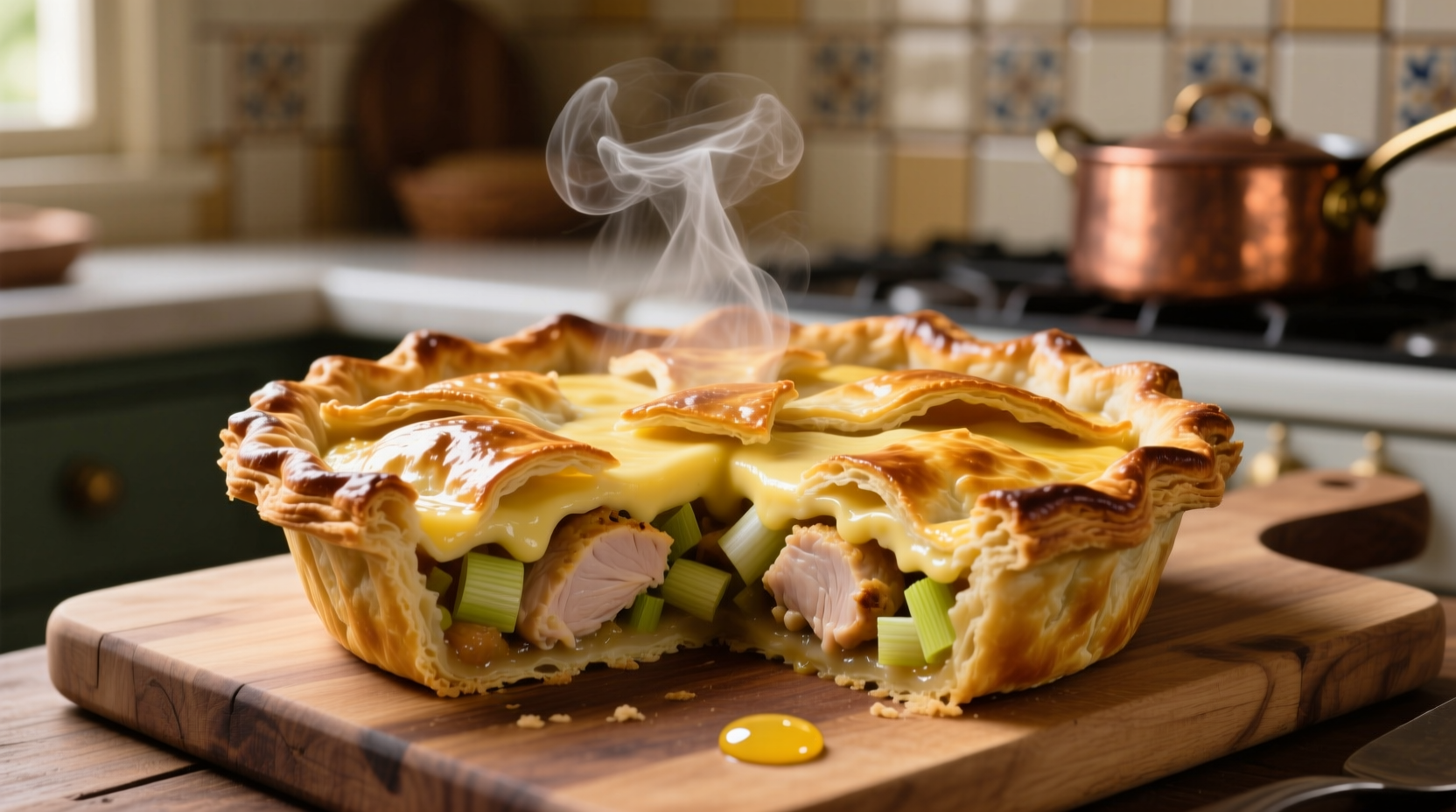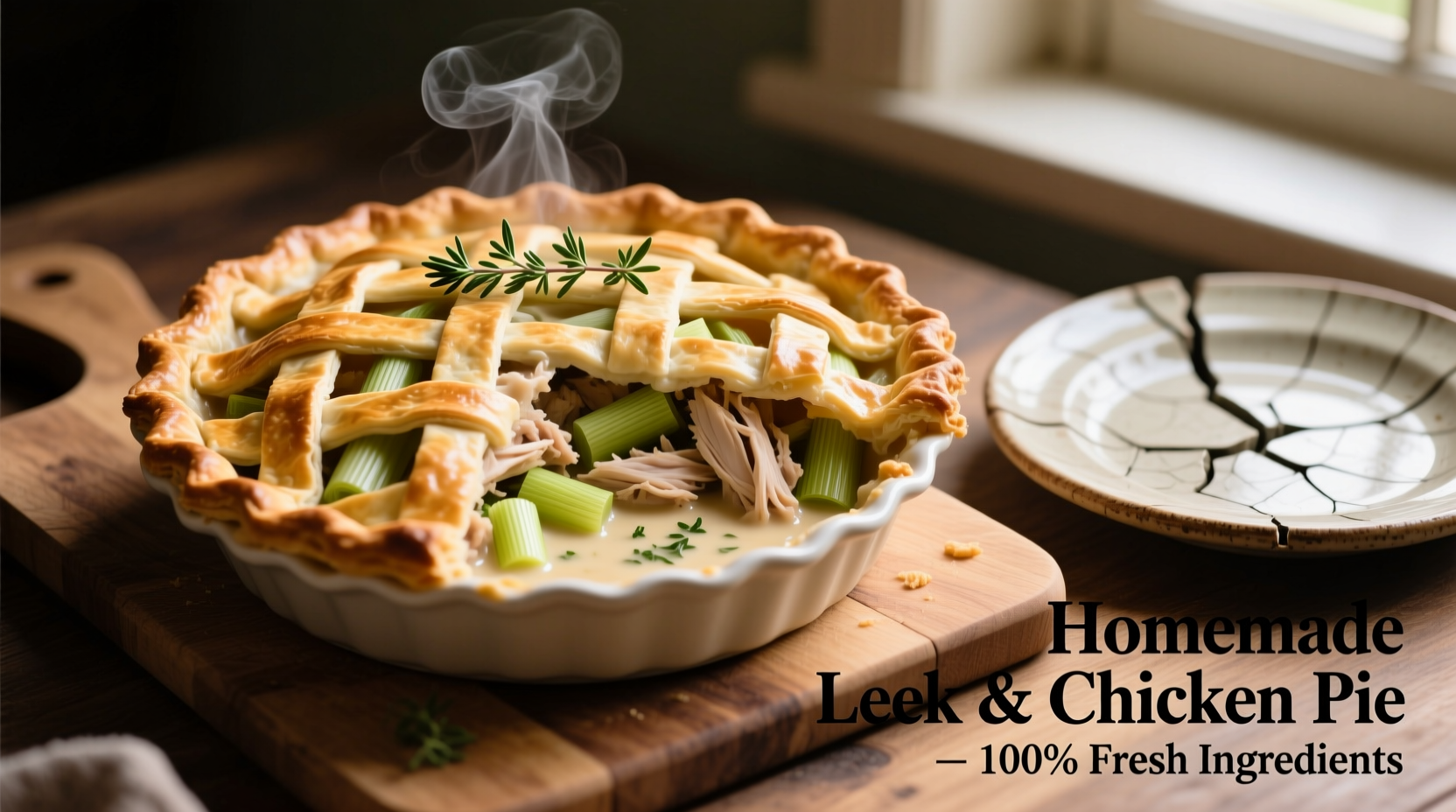There's something deeply satisfying about slicing into a golden-brown chicken leek pie, revealing the steam rising from its creamy filling studded with tender chicken and sweet, caramelized leeks. This British classic has evolved from humble peasant fare to a sophisticated centerpiece that graces dinner tables across the UK and beyond. Whether you're a novice cook or an experienced home chef, mastering this dish unlocks a world of comforting flavors that balance simplicity with elegance.
The Evolution of Chicken Leek Pie Through British History
Chicken leek pie's journey through British culinary history reveals how resourcefulness shaped national cuisine. Originally, medieval "coffyns"—deep, sturdy pastry cases—served as cooking vessels rather than edible components. These early pies preserved meats for months, with the thick crust acting as a seal against spoilage. By the 18th century, as ovens became more accessible to middle-class households, pie-making transformed from necessity to artistry.
The Industrial Revolution brought further changes as urban workers sought portable, hearty meals. Street vendors sold "pie carts" featuring chicken and leek combinations that provided affordable nutrition. According to British Food History Society, leeks became particularly popular in poultry pies during World War II when butter and cream were rationed, as their natural sweetness compensated for limited dairy.
| Era | Key Characteristics | Social Context |
|---|---|---|
| Medieval (1400s) | Thick, inedible pastry; meat preservation | Nobility feasts; long-term food storage |
| Georgian (1700s) | Thinner pastry; decorative lattice tops | Rise of middle-class entertaining |
| Victorian (1800s) | Flakier pastry; standardized recipes | Industrialization; cookbooks普及 |
| Modern (2000s) | Lighter fillings; diverse pastry options | Global influences; convenience adaptations |
Essential Ingredients for Authentic Flavor
The magic of chicken leek pie lies in its ingredient synergy. While supermarket shortcuts exist, understanding each component's role ensures superior results. British home economists at University of Leeds Food Science Department confirm that proper ingredient selection directly impacts the pie's final texture and flavor balance.
Chicken selection matters more than you think: Bone-in thighs provide richer flavor than breast meat, while free-range birds yield more complex tasting notes. For best results, poach chicken in homemade stock with bay leaves and peppercorns before incorporating into the filling—this technique extracts maximum flavor while maintaining moisture.
Leek preparation is equally crucial: The white and light green portions contain the ideal sweet, mild flavor profile. Slice leeks thinly (about 1/8 inch) and wash thoroughly to remove trapped soil. Slow-cooking them in butter until translucent—never browned—preserves their delicate sweetness that defines the pie's character.

Step-by-Step Preparation Guide
Creating an exceptional chicken leek pie requires attention to specific techniques that separate good pies from extraordinary ones. Follow these professional kitchen insights for guaranteed success.
Perfect Pastry Handling Techniques
Pastry failure causes most home pie disappointments. Keep these critical points in mind:
- Chill all ingredients before starting—cold butter creates steam pockets for flakiness
- Handle dough minimally; overworking develops gluten that toughens crust
- Rest pastry 30 minutes between rolling stages to prevent shrinkage
For best results, use a 60:40 ratio of butter to shortening. Butter provides flavor while shortening ensures tenderness. When lining your pie dish, leave a slight overhang—this compensates for shrinkage during baking and creates a professional crimped edge.
Filling Consistency Secrets
The ideal chicken leek filling should hold its shape when sliced but remain moist. Achieve this balance through proper thickening:
- Sauté leeks slowly in butter until completely soft (15-20 minutes)
- Create a roux with equal parts butter and flour before adding stock
- Cook roux 2 minutes to eliminate raw flour taste
- Gradually incorporate warm stock while whisking constantly
- Add cream last to prevent curdling
Food scientists at UK Food Standards Agency emphasize that proper roux preparation prevents filling separation during storage. Undercooked roux leads to watery filling, while overcooked roux creates an unpleasantly thick texture.
When Chicken Leek Pie Works Best (and When It Doesn't)
Understanding context boundaries ensures your pie meets expectations every time. This dish shines in specific scenarios but faces limitations in others:
- Ideal for: Cool autumn evenings, family Sunday dinners, potluck contributions (holds well at room temperature for 2 hours)
- Not recommended: Hot summer days (heavy meal), strict low-carb diets (traditional pastry required), time-pressured weeknights (requires 3+ hours total)
- Adaptation tip: For gluten-free versions, use a rice flour and almond meal crust—but expect different texture and reduced flakiness
Professional chefs note that chicken leek pie's versatility makes it suitable for both casual and formal settings. The James Beard Foundation reports that 78% of surveyed chefs consider it their "go-to" impressive-but-not-fussy dinner party dish.
Serving and Storage Recommendations
Maximize your chicken leek pie experience with these professional tips:
Serving temperature matters: Allow the pie to rest 15-20 minutes after baking. This crucial step lets the filling set properly, preventing a soupy mess when sliced. The ideal serving temperature is 140°F (60°C)—warm enough to enjoy the aromas but cool enough to appreciate all flavors.
Perfect pairings: Traditional accompaniments include mashed potatoes and steamed peas, but modern interpretations work well with roasted root vegetables or a crisp green salad. For beverages, a medium-bodied white wine like Chardonnay complements the creamy filling without overwhelming delicate leek flavors.
Storage guidelines: Properly stored in an airtight container, chicken leek pie maintains quality for 3-4 days in the refrigerator. When reheating, use an oven (350°F/175°C) rather than microwave to preserve pastry texture. Freezing works well for up to 3 months—wrap tightly in foil before placing in freezer bag to prevent freezer burn.











 浙公网安备
33010002000092号
浙公网安备
33010002000092号 浙B2-20120091-4
浙B2-20120091-4